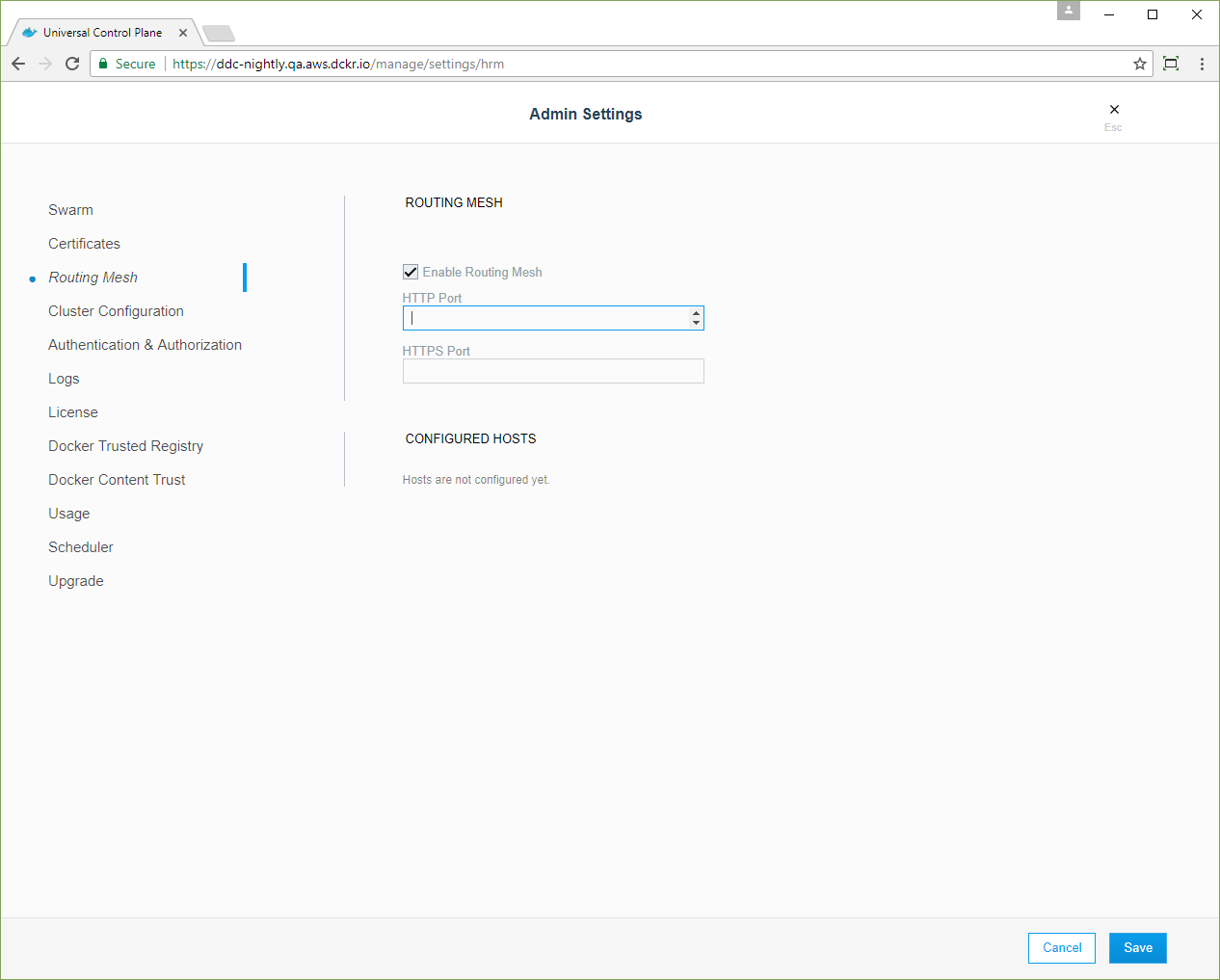Enable using domain names to access services
Estimated reading time: 3 minutesThese are the docs for UCP version 2.2.4
To select a different version, use the selector below.
Docker has a transport-layer load balancer, also known as an L4 load balancer. This allows you to access your services independently of the node where they are running.
In this example, the WordPress service is being served on port 8000. Users can access WordPress using the IP address of any node in the swarm and port 8000. If WordPress is not running in that node, the request is redirected to a node that is.
UCP extends this and provides an HTTP routing mesh for application-layer load balancing. This allows you to access services with HTTP and HTTPS endpoints using a domain name instead of an IP.
In this example, the WordPress service listens on port 8000 and is attached to
the ucp-hrm network. There’s also a DNS entry mapping wordpress.example.org
to the IP addresses of the UCP nodes.
When users access wordpress.example.org:8000, the HTTP routing mesh routes
the request to the service running WordPress in a way that is transparent to
the user.
Enable the HTTP routing mesh
To enable the HTTP routing mesh, Log in as an administrator, go to the UCP web UI, navigate to the Admin Settings page, and click the Routing Mesh option. Check the Enable routing mesh option.

By default, the HTTP routing mesh service listens on port 80 for HTTP and port 8443 for HTTPS. Change the ports if you already have services that are using them.
Under the hood
Once you enable the HTTP routing mesh, UCP deploys:
| Name | What | Description |
|---|---|---|
ucp-hrm |
Service | Receive HTTP and HTTPS requests and send them to the right service |
ucp-hrm |
Network | The network used to communicate with the services using the HTTP routing mesh |
You then deploy a service that exposes a port, attach that service to the
ucp-hrm network, and create a DNS entry to map a domain name to the IP
address of the UCP nodes.
When a user tries to access an HTTP service from that domain name:
- The DNS resolution will point them to the IP of one of the UCP nodes
- The HTTP routing mesh looks at the Hostname header in the HTTP request
- If there’s a service that maps to that hostname, the request is routed to the port where the service is listening
- If not, the user receives an
HTTP 503, bad gatewayerror.
For services exposing HTTPS things are similar. The HTTP routing mesh doesn’t terminate the TLS connection, and instead leverages an extension to TLS called Server Name Indication, that allows a client to announce in clear the domain name it is trying to reach.
When receiving a connection in the HTTPS port, the routing mesh looks at the Server Name Indication header and routes the request to the right service. The service is responsible for terminating the HTTPS connection. Note that the routing mesh uses the SSL session ID to make sure that a single SSL session always goes to the same task for the service. This is done for performance reasons so that the same SSL session can be maintained across requests.

